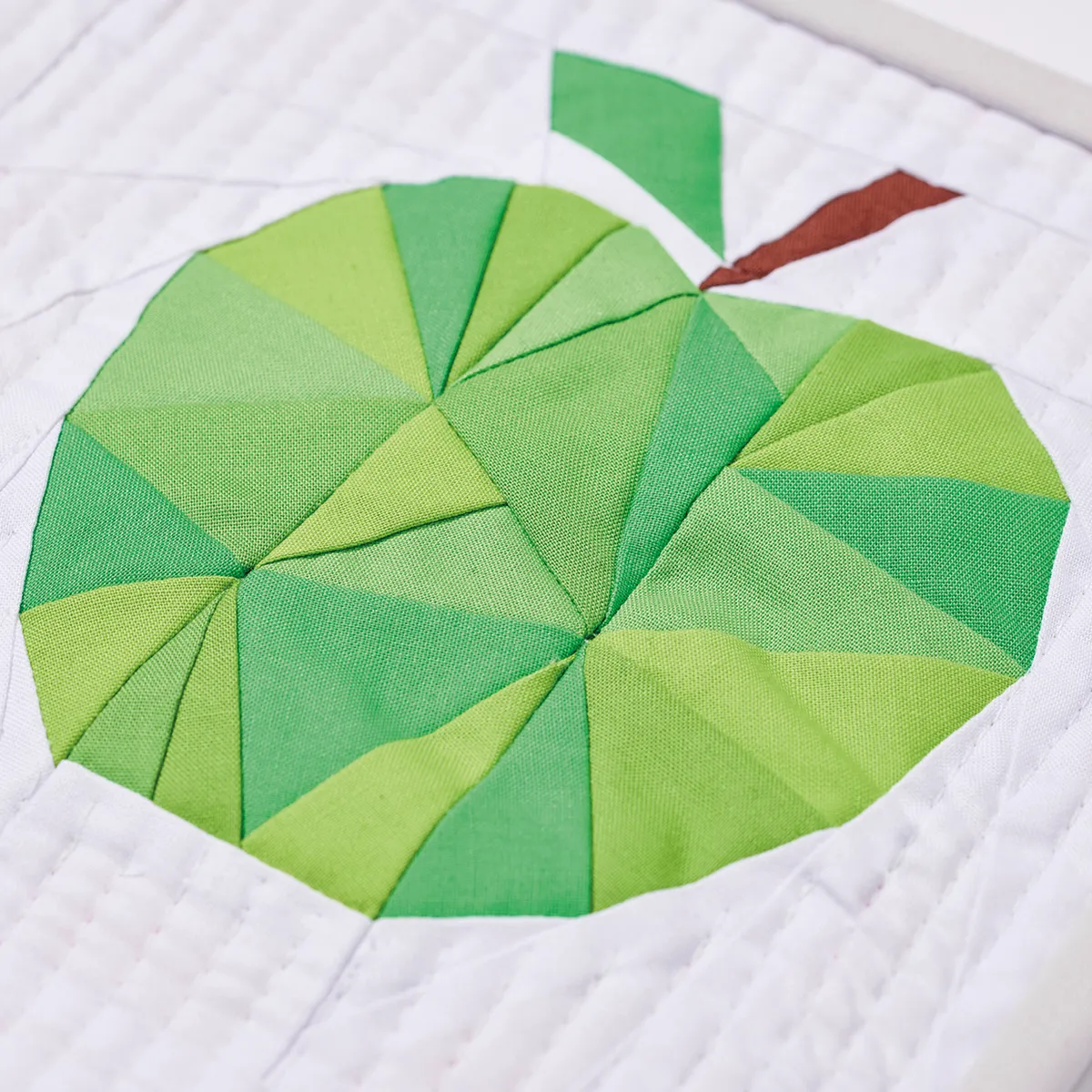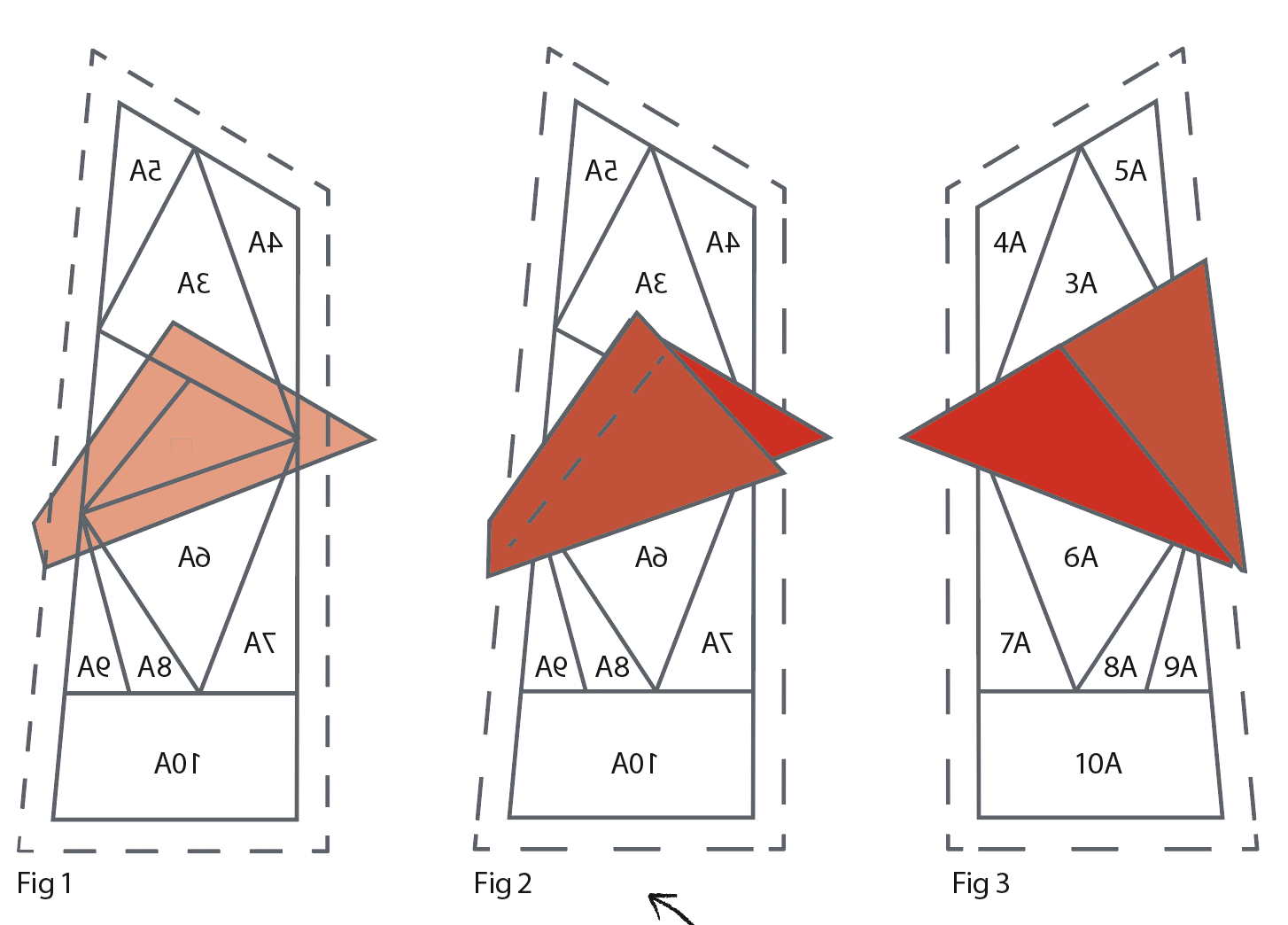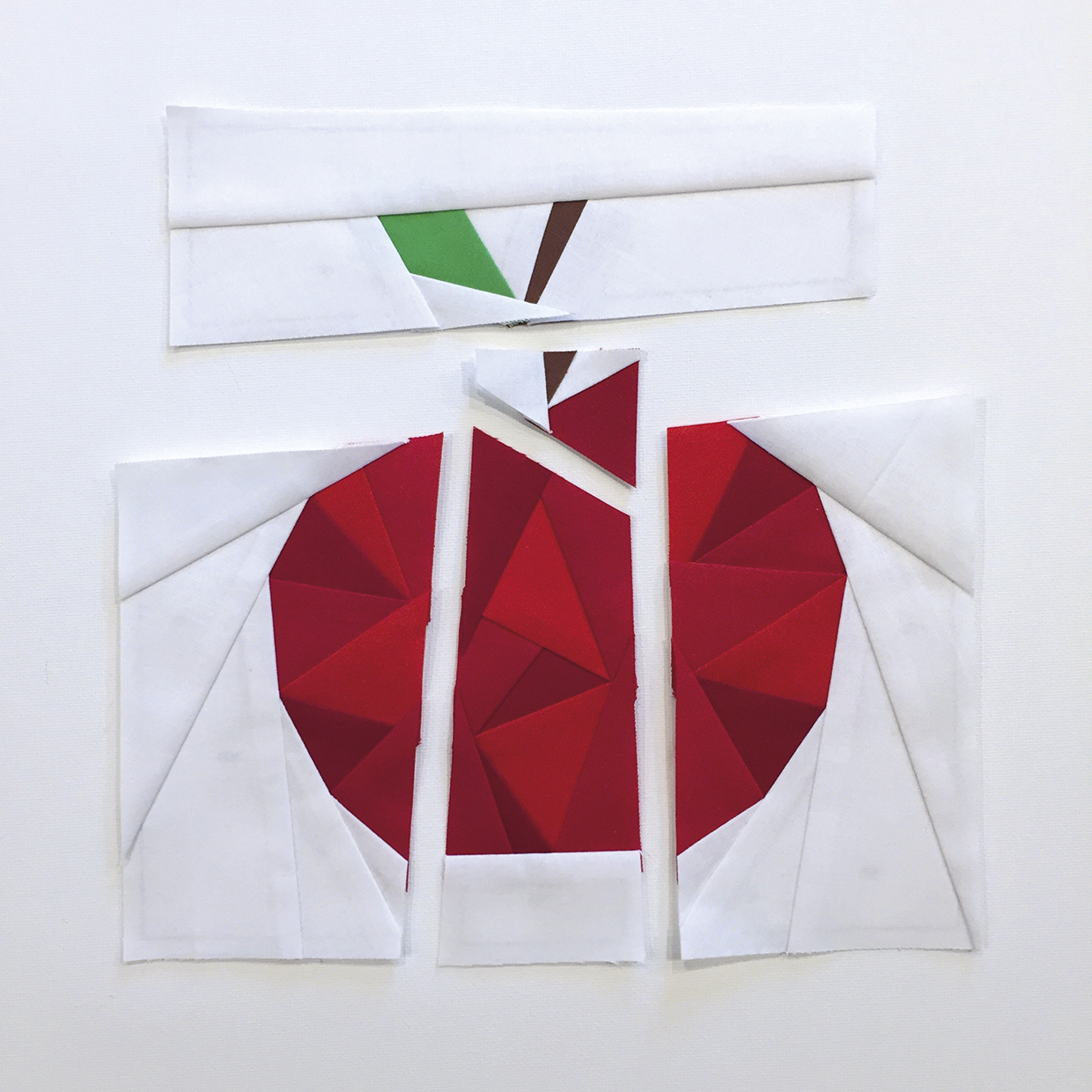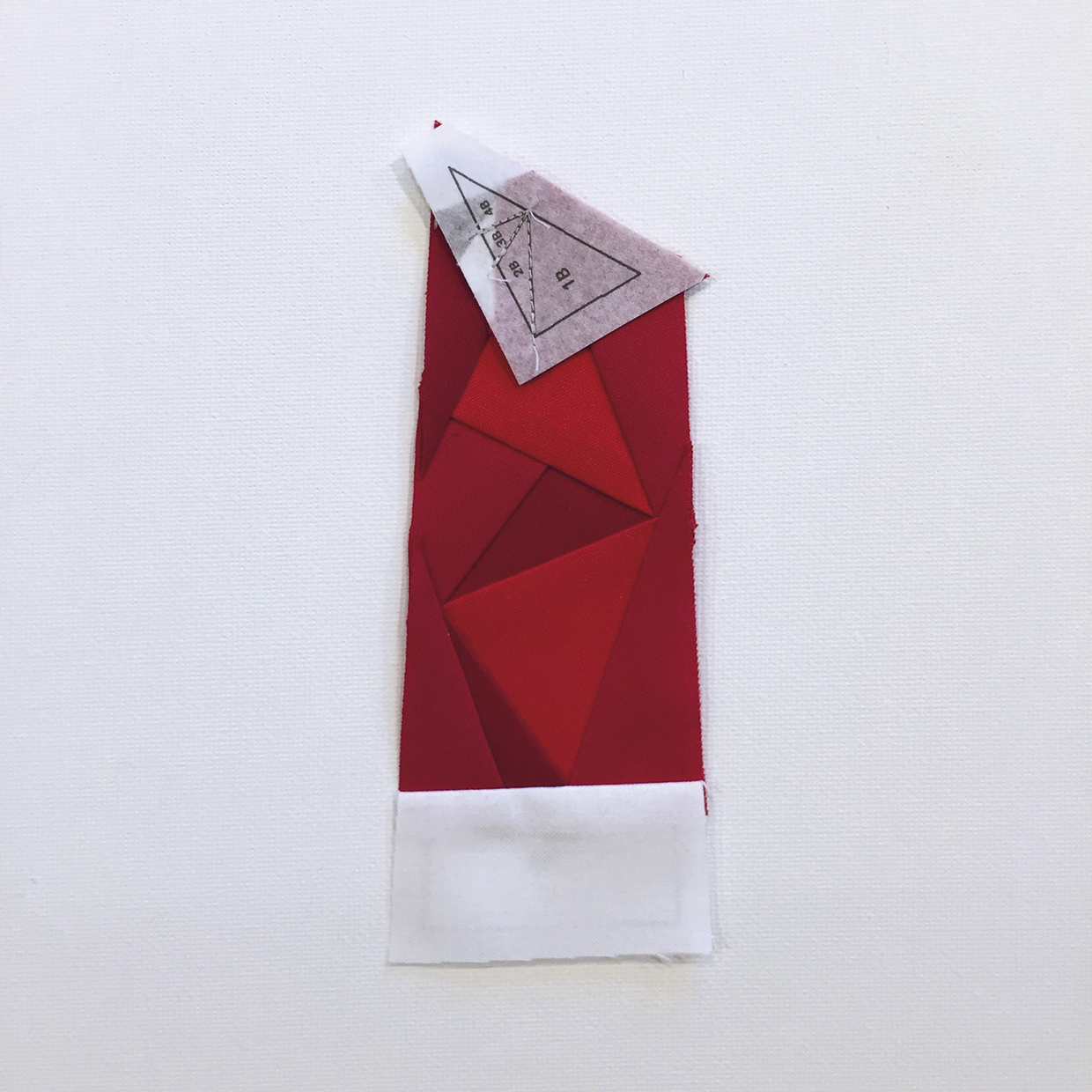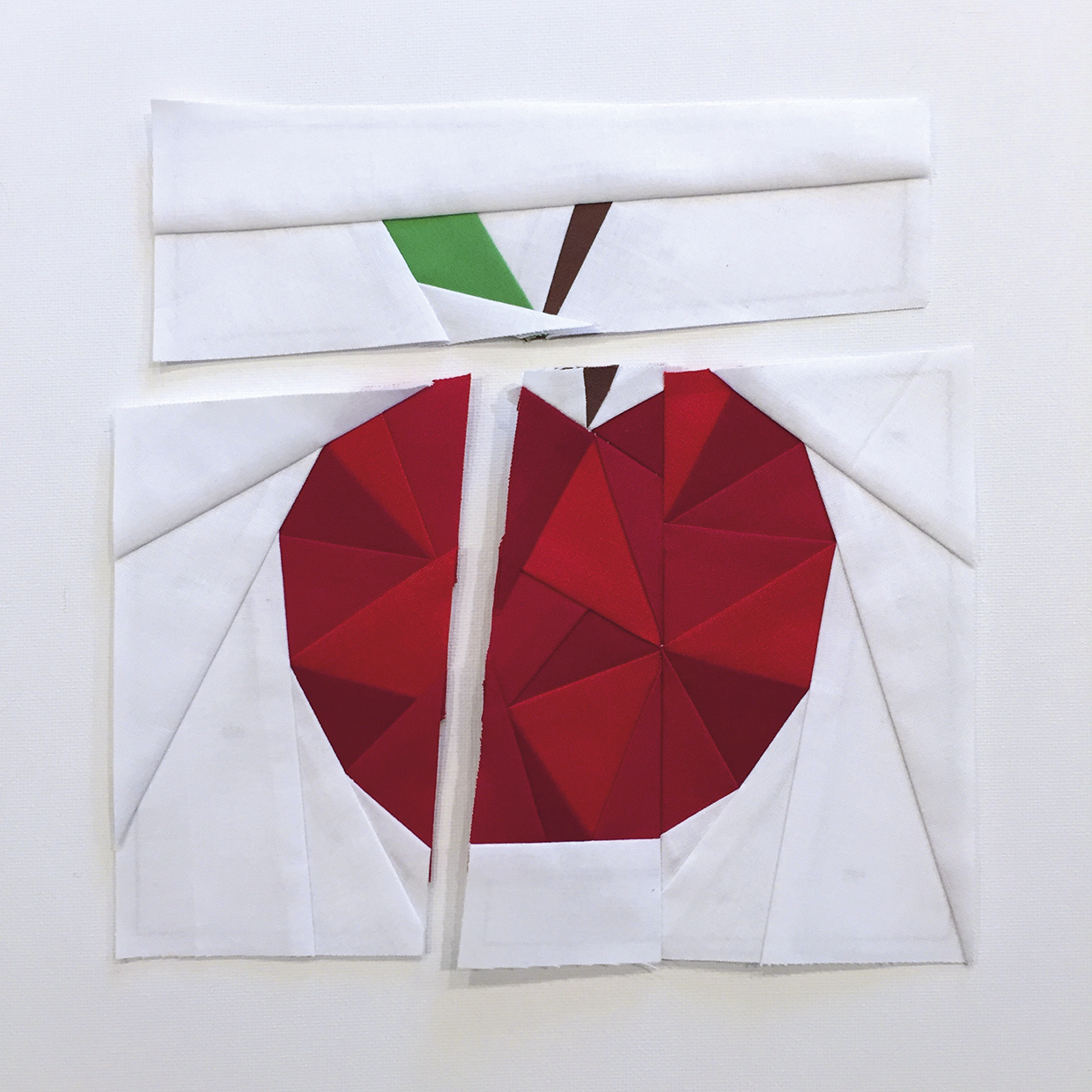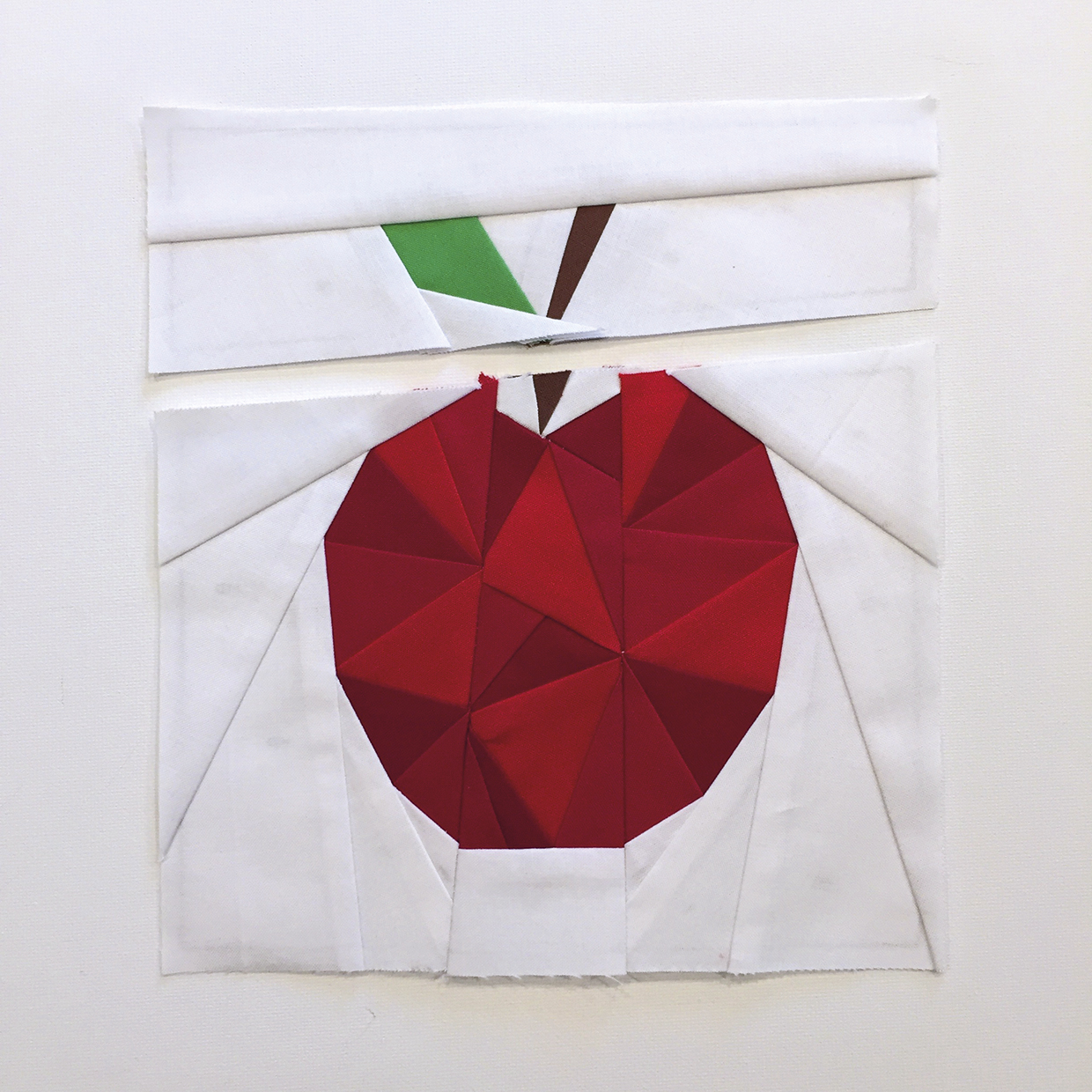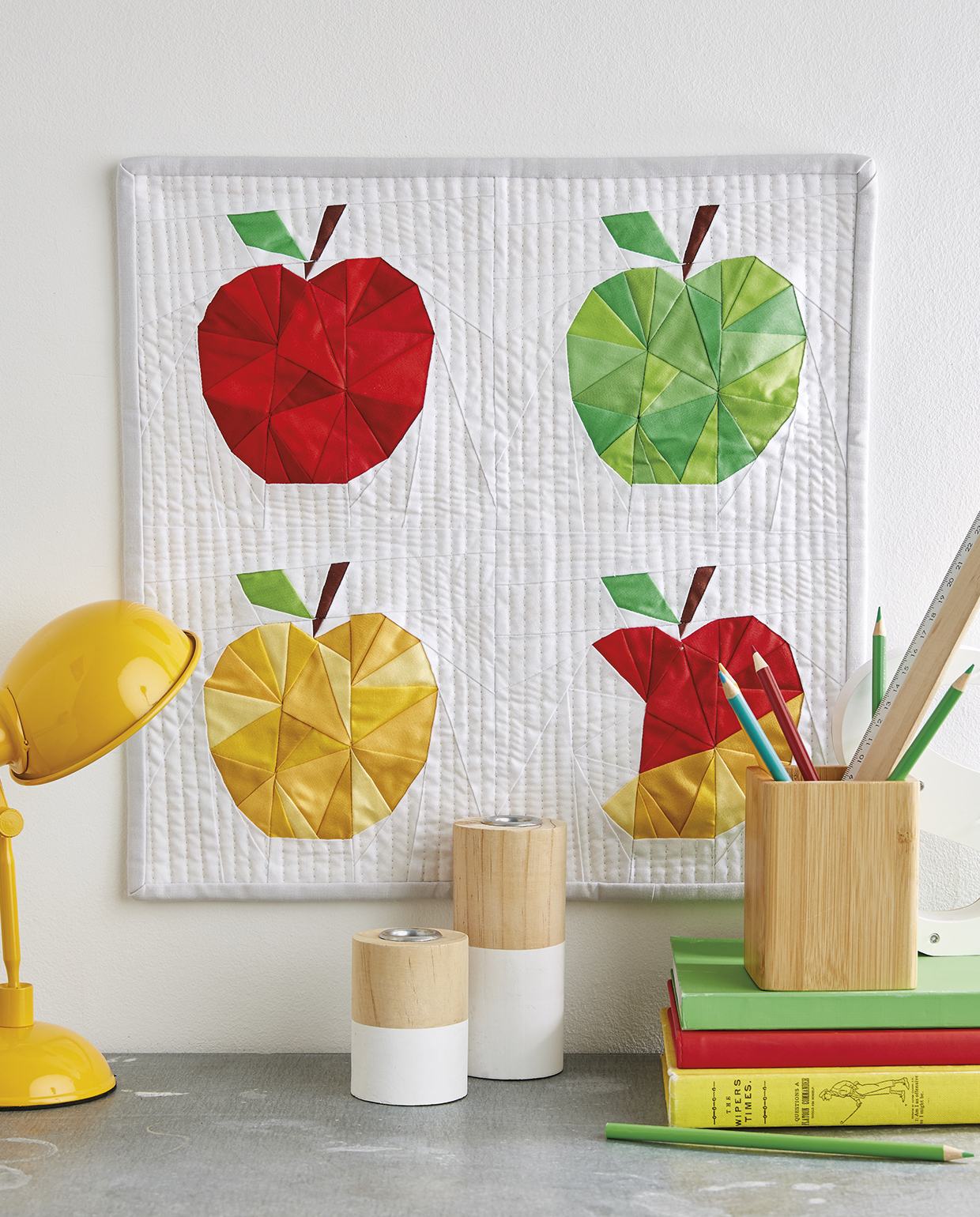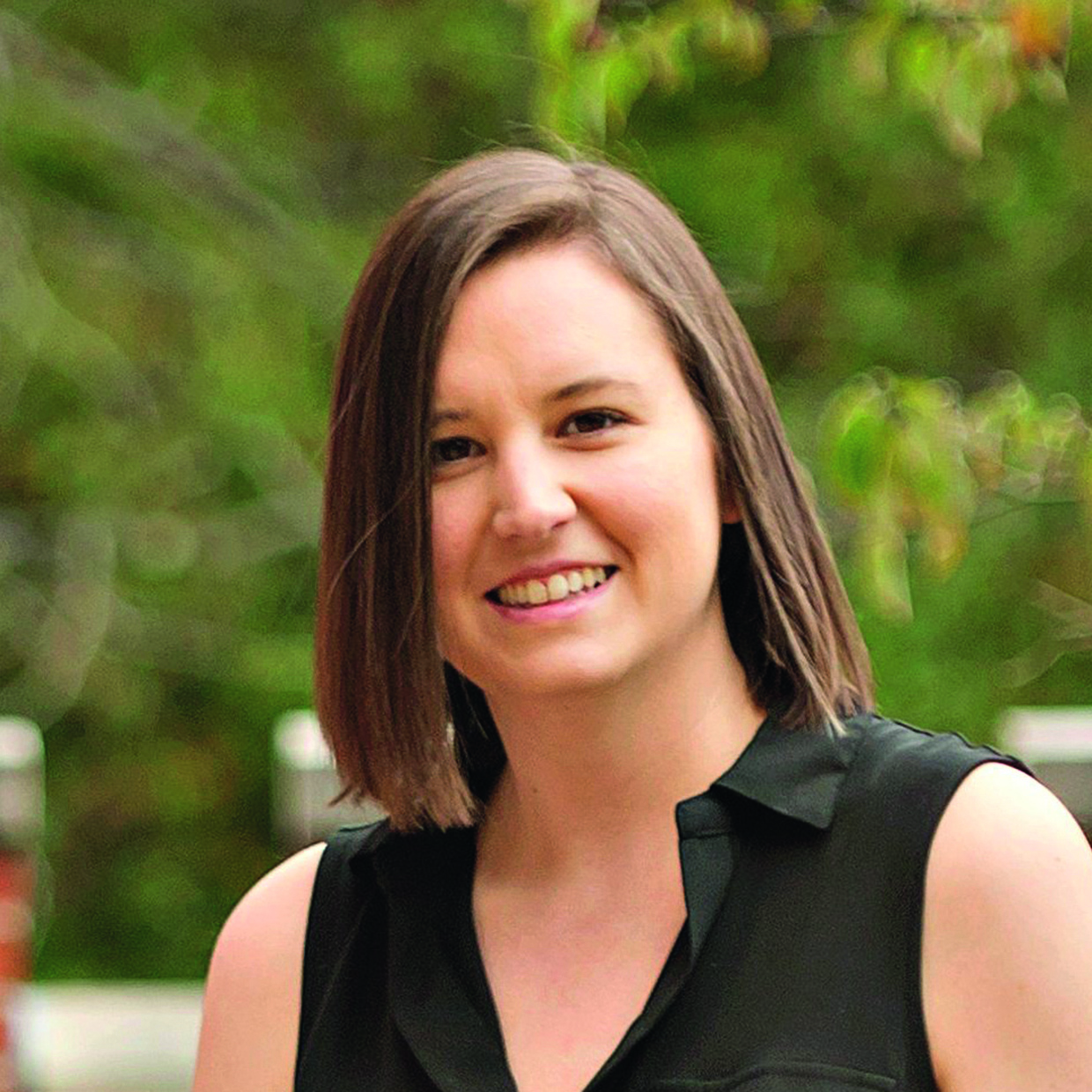OK people, are you ready for our most fun quilting project yet? Reach for your favourite fabric scraps and play with the clever technique of foundation paper piecing to make your very own patchwork apples! If you've never tried paper piecing before, it's a clever way of sewing several small pieces of fabric to a paper template (in reverse order!) to create really quite magically intricate quilt patterns.
Not sure where to begin? Head over to our beginner's guide to foundation paper piecing. Why not use a sweet apple printed fabric for your backing fabric to complete the fruity look? A good tip is to mix and match the shades of solid scrap fabric you use to sew each apple – to create a subtly varied look which still stands out as one block of colour when you step back and look at the finished quilt from afar. If you like modern quilt projects, check out our round-up of our favourite quilting trends for a good dose of modern quilt inspiration.
This project was designed by Kate Basti and was first featured in Love Patchwork & Quilting magazine.
Fabric requirements
- Red fabrics: ¼yd
- Yellow fabrics: ¼yd
- Green fabrics: ¼yd
- Brown fabric: one (1) fat eighth
- Background fabric (white): ¾yd
- Backing fabric: ½yd
- Wadding: 18in square
- Binding fabric: ¼yd
- Four (4) copies each of FPP Templates A–E
We've used...
Solid fabrics are all from the Cotton Supreme Solids collection by RJR fabrics in the following colours:
- Optical White.
- Argento.
- Aloe Verde.
- Grass is Always Greener.
- Sour Apple.
- Kelly Green.
- Sprout.
- Sunny Delight.
- Saffron.
- Lemon Chiffon.
- Sunny Side Up.
- Scarlet Letter.
- Redwork
- Chilli Pepper.
- Moulin Rouge.
- Chocolate.
Backing fabric is Apples in Red from the Picnic Collection by Melody Miller for Cotton+Steel.
Notes
- Finished size = 15½in square
- Seam allowances are ¼in, unless otherwise noted.
- FPP = Foundation Paper Piecing.
- WOF = width of fabric.
- WST = wrong sides together.
- FPP templates include the outer seam allowance only.
Free apple foundation paper piecing templates
Download our Free apple foundation paper piecing templates – as seen in Love Patchwork & Quilting magazine.
